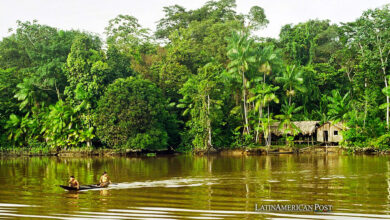This is the Environmental Impact of the World Cup in Qatar 2022
FIFA Declared the Cup Carbon Neutrality, but the Reviews Deny it. What is the Reality of its Environmental Impact?

Photo: Pixabay
LatinAmerican Post | David Rivadeneira Soto
Escucha este artículo
Leer en español: Este es el impacto ambiental del Mundial de Catar 2022
The FIFA Soccer World Cup, held this year in Qatar, has been particularly surrounded by controversy; from the very choice of the small, but powerful Arab country as the venue, to the carbon footprint left by holding one of the largest and most popular sporting events on the planet. The controversy is involved in a huge generation of money, the result, above all, of advertising, the broadcasting rights of the matches and the marketing of the World Cup. In addition, it is estimated that there is a mobilization of more than a million people who want to observe and live closely these men's soccer tournaments that take place every four years. But let's briefly recount the mists that surround the World Cup competition.
The scandal began in 2010 with the disputed choice of Qatar as the host of this World Cup. The English newspaper Sunday Times, carried out an investigation in 2014 in which it was ensured that Qatar would have paid bribes of 5 million dollars to obtain the necessary votes to be chosen as the host Nation. Another sensitive criticism was about the treatment of migrant workers who were employed in the construction of the stadiums. Apart from the poor employment conditions, there are serious complaints about thousands of workers killed since 2010 for various reasons related to work without adequate conditions.
A report from the International Labor Organization (ILO) in 2020 indicates that, in that year alone, 50 employees died in Qatar due to serious occupational injuries. Added to this is the monarchy's censorship of press freedom, discrimination, and subordination of women, and the violation of the rights of the LBGTIQ+ community.
Environmental impact 0 – 0 FIFA in the World Cup in Qatar
To all the scenario of controversies that we have just contextualized, we must add the discussions about the reality of the environmental impact that the 2022 World Cup in Qatar will cause and has caused. According to FIFA, on this occasion, the event would be the first in its history to be carbon-neutral, but for the non-profit association Carbon Market Watch (CMW), an expert in carbon pricing, such a statement is far from true.
Only in the development of the seven new stadiums that the Islamic country had to build, there are emissions associated with their construction that for CMW could have been underestimated by eight times less than the real factor, according to their calculations. For the entity, the way in which it was accounted for was wrong: “The most realistic and responsible accounting approach would have been to attribute all emissions associated with the construction of the stadiums to the tournament.”
The same CMW association finds that, in that misguided accounting approach that they gave to the measurement of the carbon footprint, that estimate that the World Cup will emit 3.6 megatons of carbon dioxide equivalent is, to say the least, inaccurate. FIFA defends itself and explains, in a report by Le Monde, that recycled, recyclable or locally produced materials were used in the construction of the stadiums; that a part of the electricity consumption came from solar energy, the water was reused, the insulation and ventilation systems were optimized and the environment was revegetated, among other measures.
Ecowashing for a small pollution giant?
However, it is paradoxical that it is in the World Cup in Qatar that carbon neutrality is declared, and, at the same time, it is one of the most polluting countries on the planet. Qatar registers per capita emissions of 34.4 tons of CO2, by 2021, according to environmental data from the Datosmacro website. Even, for Greenpeace, Qatar's wealth, for being the second-largest exporter in the world of liquefied natural gas or LNG (106.1 billion cubic meters in 2020), is its current validation pass for image laundering, thanks to the energy crisis for Europe due to the lack of fuel that does not arrive from Russia.
Read also: The 5 Teams that Can Surprise in Qatar 2022
In its defense arguments, the Organizing Committee for the Qatar 2022 World Cup stated, for the newspaper Le Monde, "that 79% of the solid waste from stadium construction sites was recycled (…) and that these buildings they use more energy-efficient air conditioning systems.” Precisely, the air conditioning system inside the stadiums is one of the points that the organizers are proud of.
The engineer Saud Abdul Ghani, who is behind its design, told the BBC that for years he devised the way to create a pleasant environment for the maximum number of people, in what he called "thermal comfort": what they sought is that , both public and players, feel fresh through a constant flow of air that is renewed. Everything, powered by solar energy. Even so, Julien Jreissati, from Greenpeace Middle East, in statements to Earth.org, maintains the indications of a greenwashing for Qatar.




